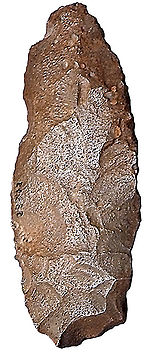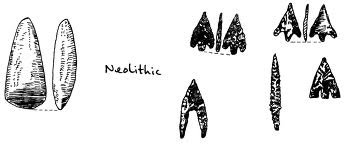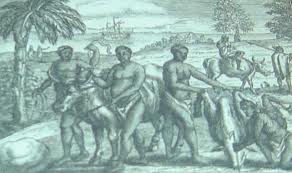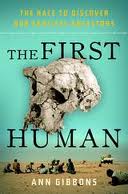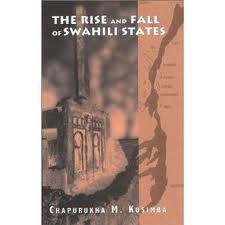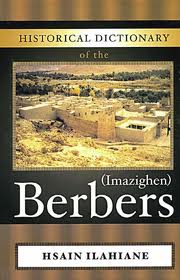- Latest Archaeology Updates
- Importance and applicability
- Famous Archaeologists
- Museums Collections
- Site Map
- World Heritage Sites
- World History Monuments
- Archaeological Organizations
- World Atlas of Archaeology
- Forensic Investigation and Geophysics
- Contact Us
- Movies based on Archaeology
- Frequently Asked Questions
- Archaeological discoveries
- Tell a Friend
- Archaeological Abbreviations
- Gallery Collections
- Famous-Museums site map
- Famous-archaeologists site map
- Archaeological Monuments site map
African Archaeology is a discipline of archaeological science that examines and studies the human history and prehistory of the African continent. It is a holistic field of study that incorporates data from a wide range of disciplines including biological anthropology, cultural anthropology, geology, history, linguistics, and many more. The development of African archaeology has been heavily influenced by European colonial exploration of the African continent. During the 19th century, many European archaeologists took part in what is now known as the 'Scramble for Africa.' Th
 ese archaeologists conducted field surveys, collected artefacts, and conducted various types of excavations in an effort to better understand African societies and cultures.
Subsequently, during the twentieth century many Africans took part in archaeological fieldwork in an effort to reevaluate and rediscover their past. This type of archaeological research was led by many Africanist scholars challenging colonial interpretations of African history.
ese archaeologists conducted field surveys, collected artefacts, and conducted various types of excavations in an effort to better understand African societies and cultures.
Subsequently, during the twentieth century many Africans took part in archaeological fieldwork in an effort to reevaluate and rediscover their past. This type of archaeological research was led by many Africanist scholars challenging colonial interpretations of African history.The primary focus of African archaeology is to gain an understanding of the history of African peoples and cultures. How they lived, interacted, and developed is studied in detail. Other research topics studied include the paleoclimate and paleoecology of the continent, subsistence and diet, the motion of peoples and cultures across the continent, and the development and spread of religion, technology, and art. Today, African Archaeology is a thriving field of scholarship, and a great deal of archaeological research has gone into recovering and restoring various archaeological sites. These excavations range from massive stone monuments to small pastoral settlements, and the evidence uncovered is greatly enriching our knowledge of the African continent's past. In recent years, the African Archaeology Study Group has been leading a great deal of archaeological research and exploration. This group is composed of some of the leading scholars and professionals in African Archaeology, and many of its members provide valuable advice and guidance to those undertaking field surveys and excavations, as well as helping to safeguard existing sites. African Archaeologyis a rapidly growing field of study, and its applications to contemporary issues are numerous. It is helping bring to light the history of African cultures and peoples, and is providing valuable insights into how those cultures interacted and developed. It is necessary in the modern world to understand the past of a culture in order to best help it in the future, and African archaeology is playing a large part in this effort.
African Archaeology Regional Study Chapters:
- Pliocene and Pleistocene Africa
- Later stone age Africa
- Metal using Africa
- Historical Africa
- Early stone age of Africa
- Middle stone age of Africa
The Pliocene and Pleistocene Epochs saw significant changes in the African continent. During the Pliocene, the landmasses of Africa had become largely delineated and the Sahara desert was beginning to form. The area of Africa south of the equator had become more wet due to changes in ocean and wind circulation. As a consequence of the increase in precipitation, animal and plant life flourished. The Pleistocene saw a significant shift in the climate of Africa, as the Sahara began to expand and the African savanna became much drier. This shift in climate resulted in a major change in the flora and fauna of Africa, as forests and woodlands gave way to more xeric savannas and grasslands.
The Pleistocene was also a time of migrations and exchanges of flora and fauna between Africa and other continents. This period saw the migration of hominins (our human ancestors) out of Africa into both Asia and Europe, as well as the spread of animals from Africa to other areas, such as the first horses to the Americas. The Pleistocene also saw the development of many Homo species in Africa, including Homo habilis, Homo erectus, and the beginning of Homo sapiens much later.
Stone Age Africa was a period of time in the continent's distant past when humans lived in hunter-gatherer societies. It ranged from around 2.5 million to 1,000 BC. These Stone Age Africans hunted and gathered for their daily sustenance and practiced pastoralism and some agriculture. This Stone Age period is divided into three major eras: Lower, Middle, and Upper Stone Age.
The Lower Stone Age, also known as the Paleolithic period (2.5 million to 200,000 BC), saw the presence of Homo erectus, an early hominid species that resembled modern humans. Homo erectus were capable of creating rudimentary stone tools to assist them in obtaining food. During this period, there was a rise in knowledge transfer and tool use; the invention of the bow and arrow was used for hunting and gathering; evidence from archaeological sites in South Africa also suggests that the Khoisan people were able to speak and use fire during this period.
Metals have been used in Africa since ancient times for a wide variety of purposes. From the shaping of tools and weapons to the forging of intricate jewellery, metals have been and continue to be a major component of the continent's advancement and economic stability. Iron is one of the most abundant metals in Africa and is used widely in the continent. It is a key component in traditional practices in some African societies, including the forging of body adornment, tools and weapons. Iron is also used as a decorative material, especially in the form of copper and brass, and it is also used to create jewellery. Iron ore is also an important economic resource, as it is mined and processed into iron for industry and infrastructure purposes. Copper is the other metal found in abundance in Africa. It is used for a variety of purposes, including coins, tools, and decorations. It was used extensively by the ancient Egyptians for jewelry and other ornamental fixtures, and copper ore continues to be one of the major minerals extracted and processed in numerous African countries. Copper is also an important industrial metal, used in the manufacture of electrical wires, pipes, and other items.
Africa is an enormous and culturally diverse region that spans much of the eastern hemisphere of the world. Although human habitation on the continent dates back several hundred thousand years, the continent's vast history has had a variety of influences from different populations. At its earliest origins, Africa was populated with hunter-gatherer societies, and the continent's archaeological evidence shows the first agricultural settlements appeared around 10,000 BC. Much of the continent's written history begins with the Egyptian civilization, which flourished from 3150 BC to 30 BC. The Egyptian Empire was powerful and had many cultural and economic influences in the region. Moving forward, Africa saw the formation of powerful empires in the west such as Ghana, Mali, and Songhai. These empires thrived on the continent's extensive trade network and caused the growth of long-lasting African states.

The Early Stone Age of Africa began with the production of the first stone tools by hominins (early human ancestors) around 2.6 million years ago. During this period, the human lineage split from the hominin lineage, and the first members of genus Homo appeared. The Early Stone Age of Africa is divided into three stages: the Lower Paleolithic, also known as the Early Stone Age (2.6 million-300,000 years ago), the Middle Paleolithic (300,000-45,000 years ago), and the Upper Paleolithic (45,000-12,000 years ago). The Lower Paleolithic of Africa is characterized by the development and expansion of the earliest known Homo species, namely Homo habilis and Homo erectus.
The Middle Stone Age of Africa, which is generally believed to have begun around 280,000 years ago and lasted until around 40,000 years ago, was characterized by major advancements in the development of stone tools. Primitive flake tools based off of cores made from brittle materials such as quartz, quartzite, or even high-quality chert were used during this period. These tools were better than those of the preceding Acheulean industry, consisting of larger, more sophisticated blades and points. The sophistication of Middle Stone Age toolkits is evident in the evidence collected from excavations of hunter-gatherer camps. In addition to a wide variety of cutting tools, many of these sites have contained scrapers, borers, and anvils.
African Archaeology , written by David W. Phillipson, is a comprehensive study of the continent's archaeological resources. In this third edition, Phillipson provides an up-to-date overview of the major archaeological sites and regions of Africa, tracing the continent's prehistory from the earliest human ancestors to more recent times.
The First Human: The Race to Discover Our Earliest Ancestors,The First Human is a groundbreaking exploration of the origins of humanity, tracing our evolution with scientific precision through evidence gleaned from fossils, DNA, and archaeological discoveries. On his quest to discover our earliest ancestors, paleontologist Lee Berger carefully gathers clues from multiple archaeological sites across the world, revealing the stories of our long-gone forebears.
The Rise and Fall of Swahili States, is a book written by John Middleton and Roland Oliver which focuses on the history of trade and politics in the Indian Ocean region during the Middle Ages. The book discusses the rise and fall of Swahili cities, the influence of foreign powers on the Swahili states, and the role of religion and culture in the politics of the region.
The Berbers are an ethnic group native to North Africa. They are distributed throughout Morocco, Algeria, Tunisia, Libya, Mauritania, Niger, Mali and the Canary Islands. Historically they have been referred to by many names, including Amazigh, which broadly translates as "free people." They are a predominantly rural people, with the majority of their population living in semi-arid areas, such as the Atlas Mountains and Sahara Desert.
Rich Resources over the web on African Archaeology
- The African-Archaeology in wikipedia:
- Journal of African Archaeology :
Journal of African Archaeology is an international, peer-reviewed journal that publishes original research and interpretive essays on the prehistory of Africa from the lower Pleistocene to the protohistoric period. The journal covers all aspects of African archaeology including how African archaeological finds are documented and interpreted, and what their implications are for understanding later periods in African history. The journal also focuses on archaeological method and theory and new developments in fieldwork, such as the application of technology in remote sensing, exploration, and analysis. All papers are peer reviewed.
The African Archaeology explores the history, people, and cultures of African societies in prehistoric, ancient, and modern times. It is the study of the human cultures of the African continent from past to present. African Archaeology involves investigations into the lifestyles, social organization, subsistence economies, settlement patterns, and technological adaptations of African societies over time. The field also includes the investigation of African rock art and use of computer models and techniques to understand ancient societies and environments.
-
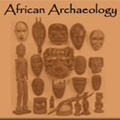
African Archaeology is the study of the history and prehistory of the African continent, as well as its societies and cultures, through the use of archaeological evidence. African Archaeology covers a broad range of topics, from the Stone Age to the present day. -

American Archaeology also known as New World archaeology, is the study of the archaeological history and prehistory of the Americas. It is a subfield of archaeology, the study of the human past, which seeks to understand societies and cultures by examining their material culture, such as artifacts and ruins. -
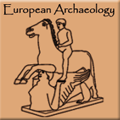
European Archaeology is the scientific study of the material remains of past cultures and societies in Europe, from the Paleolithic period to the present day. It is an interdisciplinary field which draws on the methods and theories of a range of disciplines, including history, anthropology, art history, geography, geology and linguistics. -
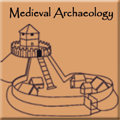
Medival archaeology is a field of archaeology that is primarily concerned with the material remains of the Middle Ages, which is roughly defined as the period from the 5th to the 15th century. -
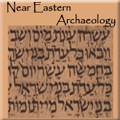
Near Eastern Archaeology is the study of the material culture found in the Near East, a region of Eurasia that covers the Middle East, North Africa, and parts of Central Asia. The region is often referred to as the cradle of civilization, as it is the site of some of the earliest known civilizations, including the Sumerian, Babylonian, and Assyrian empires. -
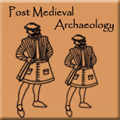 Post Medieval Archaeology is the study of the period from the 15th century to the 19th century. It is a period of great change and transformation, with the rise of nation states, the onset of industrialization and the spread of global trade. Archaeological evidence from this period reflects the development of these changes and the impact they had on everyday life.
Post Medieval Archaeology is the study of the period from the 15th century to the 19th century. It is a period of great change and transformation, with the rise of nation states, the onset of industrialization and the spread of global trade. Archaeological evidence from this period reflects the development of these changes and the impact they had on everyday life. -

Modern Archaeology is the study of human activity in the past using the material remains of a culture. It is a subfield of anthropology that includes the study of artifacts, architecture, landscapes, and cultural landscapes. It is a scientific approach to the study of past cultures and societies, and often involves excavation, laboratory analysis, and other research method


